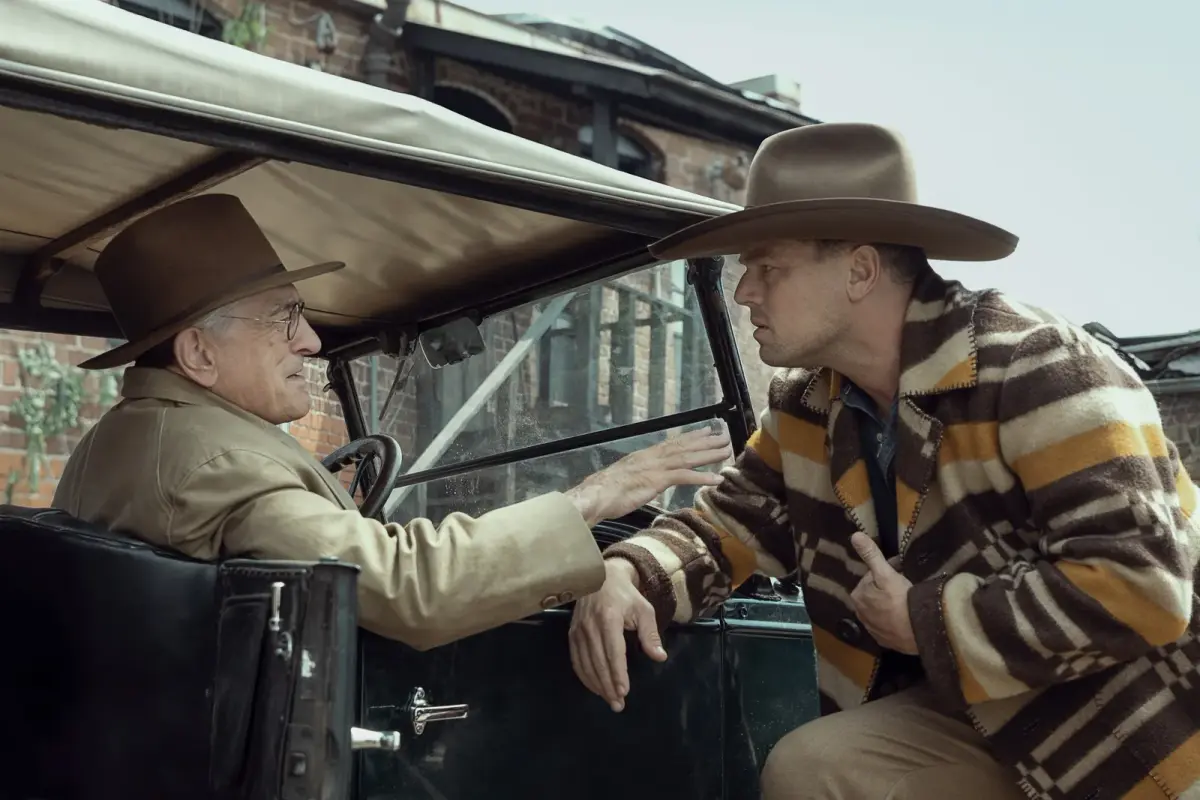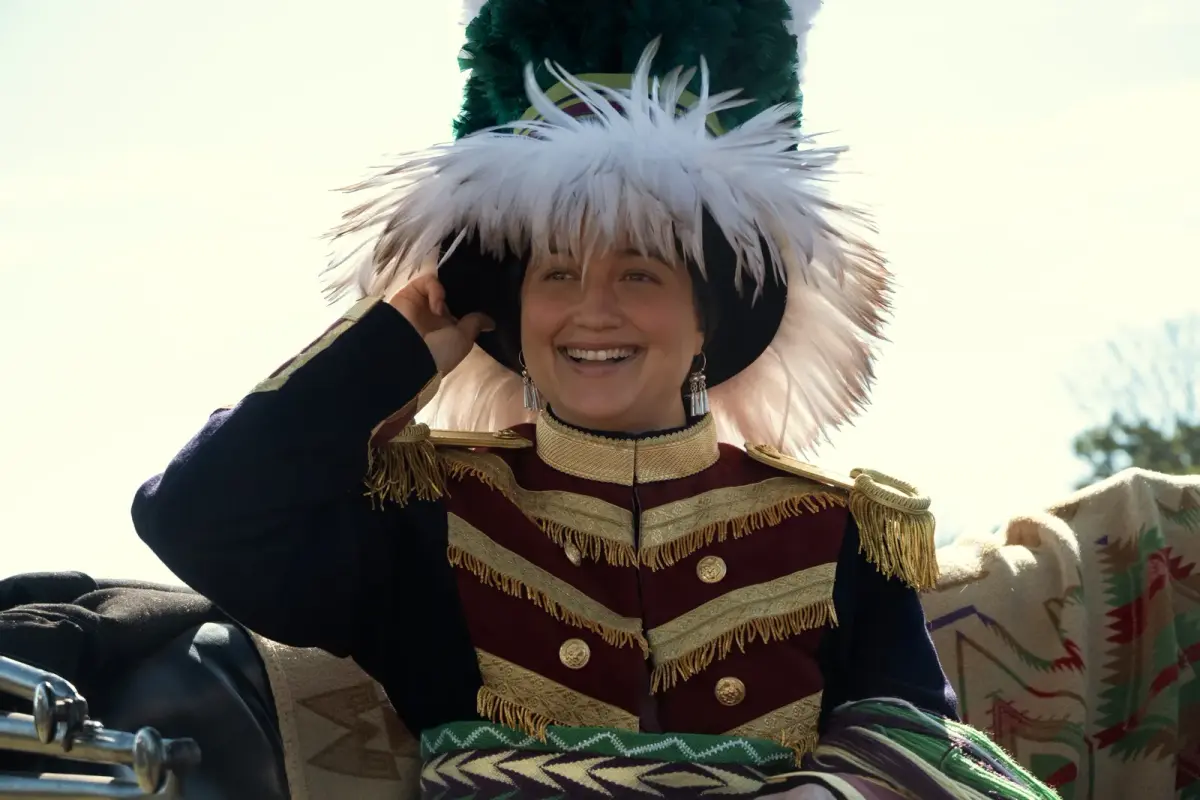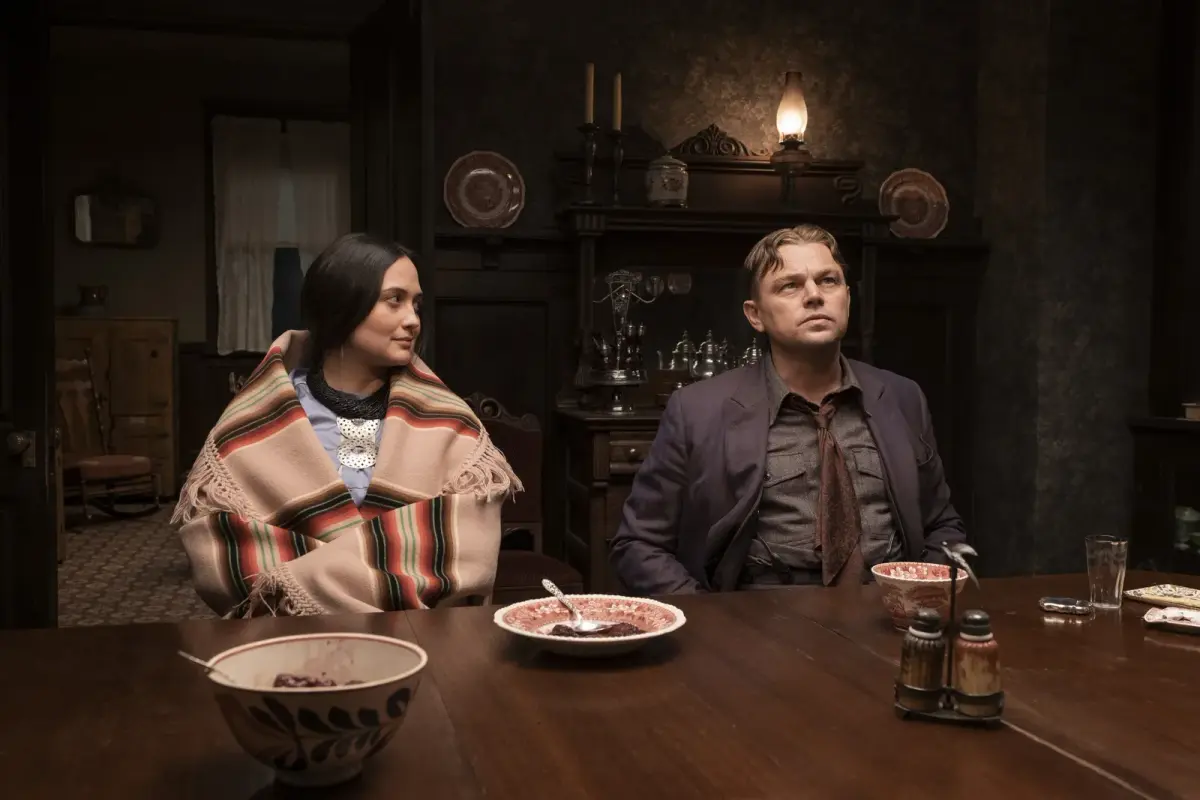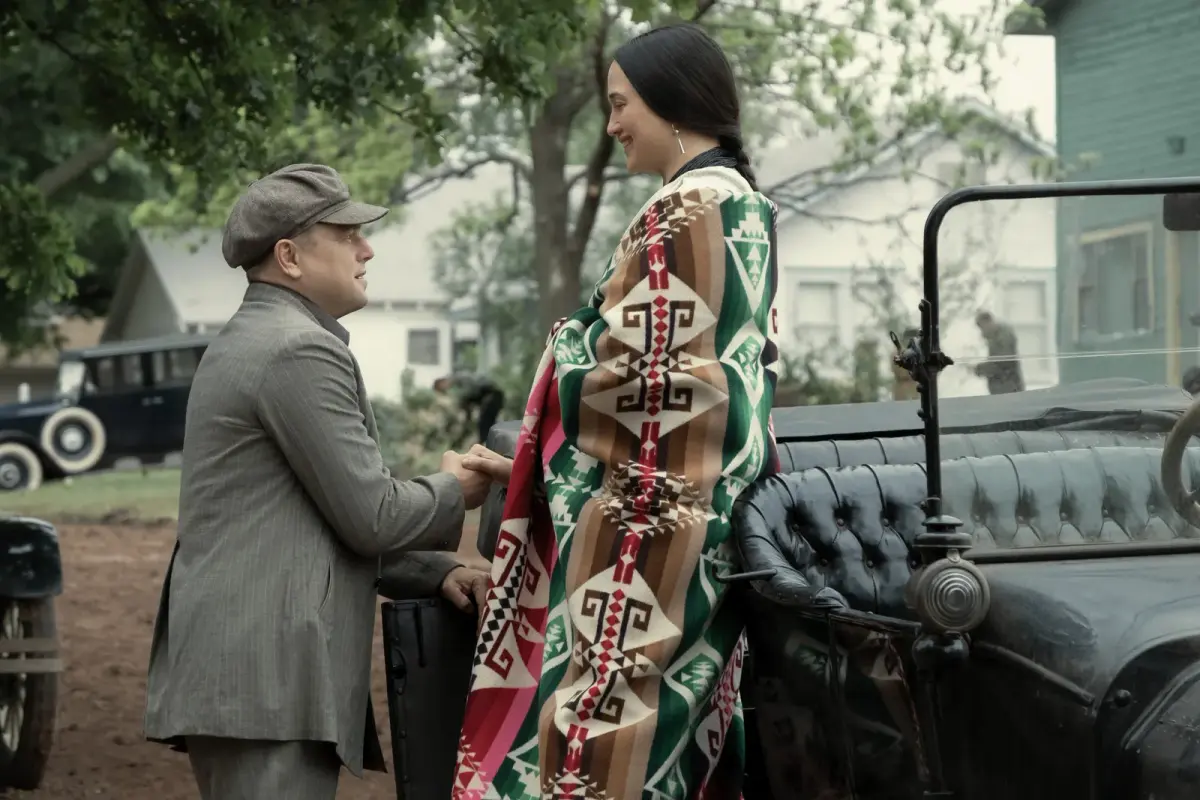
In Killers of the Flower Moon—Martin Scorsese’s new crime drama, out October 20—Indigenous culture takes the spotlight in more ways than one.
Based on the nonfiction book by David Grann, the film tells the real-life tale of how members of the Osage Nation in 1920s Oklahoma were murdered after oil was discovered on their land.

Photo: Vogue
In addition to a powerhouse Indigenous cast—including leading lady Lily Gladstone (who’s already garnering Oscar buzz), Cara Jade Myers, and Hollywood legend Tantoo Cardinal—the film uses distinctive costuming that pays homage to traditional Osage design to tell this untold story.
Such a monumental project was no small feat for the lead costume designer, Jacqueline West, and the research process began long before filming.

Photo: Vogue
First, West needed a team of Indigenous consultants to ensure the costuming was accurate for the time period, so she enlisted lead Osage costume consultant Julie O’Keefe to work closely with her.
Together, they then assembled a whole team of Osage artists—including Kugee Supernaw, Sean Standing Bear, Jennifer Tiger, Jessica Harjo, and Moira RedCorn—to work on special pieces for the film.
The movie centers around Ernest Burkhart (Leonardo DiCaprio), who marries Mollie (Lily Gladstone) as a ploy to infiltrate her wealthy Osage family, the Kyles, and steal their inheritance. Soon after, Mollie’s sisters start to disappear under mysterious circumstances, one by one. In the early 20th century, the Osage Nation was one of the richest people per capita in the world, earning substantial royalties from oil sales in their territory. This wealth made them a target.
Knowing this history, West and O’Keefe wanted the Native attire in the film to be extravagant and beautiful—two qualities they often found within their research of what Osage members wore at the time.
A pivotal piece that exemplified this idea of luxurious—yet traditional—Osage style was the blanket, an ornamental accessory worn by all four of the Indigenous sisters in the film.
West and O’Keefe’s research found that many Osage women wore striped blankets by Pendleton that were sometimes adorned or embellished by family members with extra elements.

Photo: Vogue
Pendleton ended up re-creating more than a thousand blankets for the film, and then the workroom of Indigenous artists fringed them, added ribbon work, or embroidered symbols onto them.
West and O’Keefe also took special care in how all of these main (and background) characters wore the pieces—whether they were draped across the back or folded delicately over the arm.
Ernest and Mollie’s wedding ensembles were crucial costumes as well.
In Osage culture, traditional wedding coats and top hats—worn by women during the ceremony—are some of the most important and sacred elements.

Photo: Vogue
The look derives from the early 1900s, when military jackets and top hats were often given to Osage chiefs and leaders from the US government and were subsequently repurposed as bridal attire.
While the film’s costuming includes plenty more splendor to take in—don’t miss the handmade moccasins, striking ball-and-cone earrings, beaded chokers, or Stetson hats on the Osage men—it was the process of creating these pieces and bringing them to life that truly resonates with the designers.
For once, an entire Indigenous community was allowed to take the creative reins behind the scenes—a rarity in Hollywood, which has historically appropriated and stereotyped Indigenous people—and tell an accurate story through fashion instead.
Source: Vogue
Stay tuned for the latest news on our radio stations


